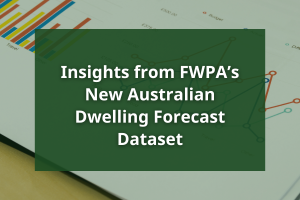(Please note due to issues with the data dashboard we are not able to provide a direct link to the graphs used in this article. However most of these graphs can be accessed through the FWPA data dashboard).
Australia’s housing finance grew for the second successive month in July, lifting to AUD18.917 billion, with strength in loans to owner occupiers in general, stability in the value of loans to first home buyers and modest growth for the investor community. Even as some cheer on the confidence being displayed by borrowers and lenders alike, the main regulator was speculating on persistently high household indebtedness and its possible impact in a recession.
With the total value of loans in July running to AUD18.917 billion (up 10.7% on the previous month), loans to owner-occupiers contributed AUD14.333 billion or 17.8% of total loan values for the month.
As the chart shows, after a short correction in May, the value of housing loans has recovered in that curious V shape that we would all like to see for the entire economy. That is, just as loan values were fast to fall, they have been as fast to rise. This may not prove sustainable as the year moves on, but it is certainly cause for hope, especially when total monthly loan values have not fallen as low as they were in early 2019.

Importantly, while the role of investors declined proportionally in July (their share declined), the value of loans to investors lifted 3.5% on the prior month, to AUD4.584 billion. This is still well below the pre-pandemic level of around AUD5.0 billion per month.
First home buyers signed loans valued at AUD4.243 billion, up 10.6% in line with other owner-occupiers and accounting for a still strong 22.4% of total loan values.
In general, on a platform of low interest rates, JobMaker program support and pent-up demand, the 8.9% lift in the value of total new home loans is good news for the housing economy and for the nation as a whole.
If we want to understand the sharp decline and correction in the value of loans on an annualised and month-on-month basis, we can examine the chart below.

Even recently, the year-on-year declines have moved more gradually and taken longer to both decline and recover. Not so in the most recent experience.
That does not mean that it is all beer and skittles in the housing market right now. Levels of household indebtedness, supported by those low interest rates, are a cause of constant wariness, if not outright concern.
A new RBA discussion paper suggests that because of household debt levels, if there was a sustained recession that saw house prices fall sharply – that has not happened to date – consumption could be curtailed by more than would otherwise be expected.
Put another way, in a really deep recession where house prices fall, high household debt could deepen the recession with households reducing their consumption because they perceive they are less well off than might actually be the case.
Australia’s household debt to income ratio is a little short of 200%, way above the average 121%. Only some Scandinavian and northern European countries have higher levels of household indebtedness.
Expectations from economists vary, but some predict falls of between 10% and 20% from previous peaks.
The RBA research also provides a potential contradiction of its own. It reports that one reason for high average household indebtedness is because the household sector owns most of the rental property. In most countries government and corporate owners are more invested.
So, it is conceivable that if property prices fall, some households will exit investments to sustain their living standards, rather than retain the assets and cut back on their expenditure. A bit like a game of Monopoly.



